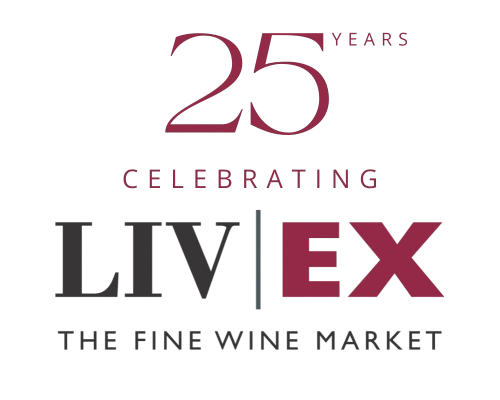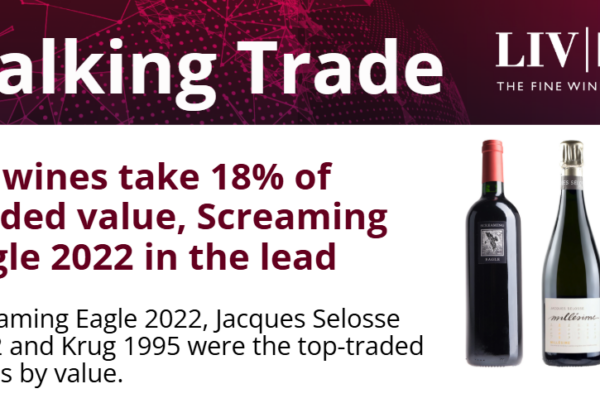Last week ODL Markets announced that it was setting up a spread betting market enabling participants to trade on the future level of the Liv-ex 100 (see here for full details). Since then the index itself, quite rightly, has come under increasing scrutiny. We recently received the following email from one of our subscribers.
“I think a lot of people might be more inclined to trade the Liv-ex 100 index if it was more stable. Personally I think it looks like a screaming short – but I am nervous about taking such a position because of the arbitrary nature of the index’s composition. (“wine is a great investment” is a powerful message for Liv-ex). So there must be a strong temptation for you to substitute wine that you think might fall in value for wine that you think has upside.
Plus also, surely the RP 95 point rule also biases it to the upside? If a wine goes from 96 points to 93 it will be removed from the Index right? If so, that is like the S&P 500 removing stocks that have ‘sell’ recommendations from analysts. Crazy!!
If you only rebased the index periodically (and on objective criteria such as ‘market cap’ weighting) then I would trade it (and short it to pieces). But as it is I don’t think it is trustworthy. And like “hedge fund indices” which conveniently strip out funds that go bust, it is not surprising it ‘appears’ to be so strong. The index is not an index at all but a marketing gimmick.
I may well misunderstand this and therefore would appreciate any comments you might have.”
The writer raises a number of important points that we thought were worth discussing. We also thought that our blog readers would want to share in that discussion.
We can’t deny that Liv-ex benefits from a buoyant and confident fine wine market. Our approach to the Liv-ex 100, however, has very much been to ensure that the Liv-ex 100 best reflects the realities of the fine wine market. Below we answer the questions raised above.
How do we ensure the index is fair reflection of the market?
1. Components have to be ‘physical’
Fine wine prices are generally most volatile soon after their release. Furthermore, unless you have been buying the wine for years and have an allocation, it is sometimes difficult to get access to the best wines at the release price. We try to minimise this by only including wines once they are both physically available and Robert Parker (and the other critics) have tasted the wines in bottle. By the time wines are included in the index, therefore, a fair price has already been established and the wines are widely available in the secondary market. The 2005s, for example, will only be added to the index at the end of June.
2. Components are production weighted
Traditionally fine wine indices have been price weighted. The problem with this methodology is that it gives undue importance to highly priced, small production wines that are rarely traded in the market like le Pin, Romanee Conti or Screaming Eagle. Wines in the Liv-ex 100 Index are weighted by their production value (i.e. multiplying the Chateau’s production by the current price) which is a much better reflection of its actual tradability. The press are always keen to highlight record prices at auction, but if there are only three bottles in existence – who cares! Actually they should focus on Lafite 2000 or 2005 with a production value of close to £200m.
3. Components are scarcity weighted
The index is also scarcity weighted to account for the fact that the supply of wine diminishes over time (i.e. it gets drunk!). This is done on a gradual basis until the wines are 25-years old. When wines reach 25-years from vintage they are then removed from the index for liquidity reasons.
4. Components of the index are priced at the Liv-ex mid price
The Mid Price is the most robust measure for pricing wines available in the market and is calculated by finding the mid point between the current highest bid price and lowest offer price on the Liv-ex trading platform. Each price is then verified by our valuation committee to ensure that the number is robust after taking into account all of the data at their disposal, including merchant offer prices and Liv-ex transaction prices.
Why the 95-point rule?
The basis for this is that the wine investor’s mantra is always to buy the ‘best wines from the best vintages’ and our index is designed to reflect this. These are exactly the wines that most merchants, investors and collectors are interested in tracking the price of. Similarly, these are the wines that are the most highly sought after and actively traded.
What criteria do we use to add and remove wines?
Wines are removed when they reach 25 years from vintage or before that if the tradable stock is so low that the wine is rarely traded on the exchange. Liv-ex replaces these wines with those from a more recent vintage after taking into account their point score (95+) and their liquidity (both value and volume) – as we are currently doing with the 2005s. We are totally transparent about those wines that join the index and those that leave.
Does the index have a success bias?
To a certain extent all indices, by their very nature, have a ‘success bias’. Market capitalisation weighted indices – such as the FTSE 100 or S&P 500 – only include the biggest companies. Clearly to have become large companies and make it into the benchmark they have defied ridiculous odds relative to the millions of companies in existence. Similarly, if a company runs into financial trouble or goes bust it is replaced in the index – Northern Rock and Enron were both once included in benchmark indices.
It is actually quite rare that Liv-ex removes a wine because its points score has been downgraded, because critics do not often downgrade a wine once it has been bottled. Nevertheless, quality is an important criteria in choosing a selection of wines for a benchmark index in an industry where there are thousands of different products. Many bond indices, for example, only track investment grade debt. In the debt markets “quality” is assessed by the rating agencies. In the fine wine market the likes of Parker are the equivalent of the debt market’s Moody’s or Standard and Poor’s.
If the Index has risen in the last few years, this is because prices have gone up. Clearly this is a great story for Liv-ex and the fine wine market in general, but in no way has this been fabricated or the results massaged in anyway. The index has not always gone up. Should you download the full series of the index from the website you will note that it was pretty flat between July 2001 and July 2005. Liv-ex has made it its task to reflect the market in the most accurate and transparent way possible.
Indeed, all of our data is collated on an arm’s length basis and we derive no profit from a rising or falling market. Liv-ex is a pure exchange. Our primary role is the provision of data. While we do settle and clear trades on behalf of our members, we do not hold stock, make markets or trade wine on our platform.
Having said that, the way we calculate the Liv-ex 100 is constantly under review in order to make it as robust as possible and we value your feedback (positive and negative) very highly. As the market for fine wine becomes more efficient – in recent years it has become more liquid and more transparent – so does the data that the Index is based on. If you are brave enough to believe the fine wine market is a “screaming short”, Liv-ex’s tie up with ODL markets provides you with a vehicle to test that thesis with your money. There is no doubt that the Liv-ex 100 Index is a powerful marketing tool, but its success is derived from the fact that it reflects the market as it is, not because it is a gimmick. Good luck!



